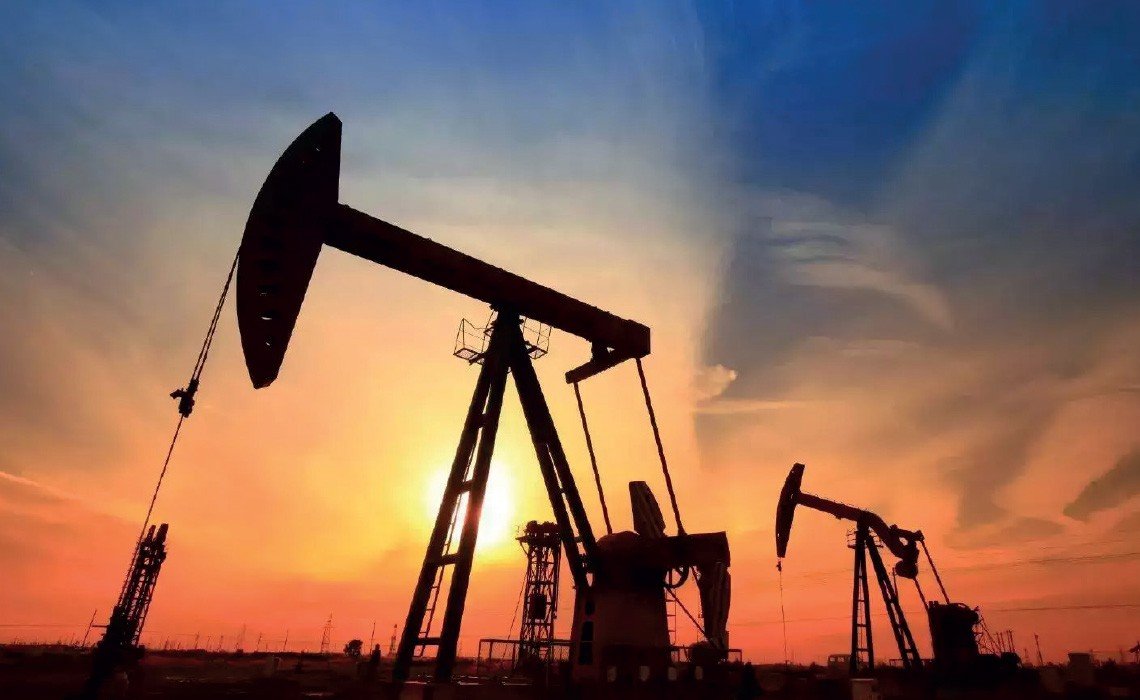
Oil and gas activity in the top US oil-producing shale basin, the Permian, grew slightly in the second quarter of 2024, as output remained essentially unchanged, the quarterly Dallas Fed Energy Survey showed at the end of June.
Half of executives at US oil and gas firms in the Eleventh District—Texas, southern New Mexico and northern Louisiana—said in the survey that their firms do not use artificial intelligence (AI) and do not plan to do so in the near future. Shale bosses also see the ongoing consolidation wave among exploration and production (E&P) companies to have either no impact or to lead to slightly lower US oil and gas production over the next five years.
US Oil & Gas Activity Slightly Up
Activity in the oil and gas sector in the Eleventh District grew in the second quarter of 2024, according to oil and gas executives responding to the Dallas Fed Energy Survey. The business activity index, the survey’s broadest measure of the conditions, increased from 2.0 in the first quarter to 12.5 in the second quarter.
Oil and gas production was little changed in the second quarter, according to executives at E&P firms. The oil production index advanced from -4.1 in the first quarter to 1.1 in the second quarter. The near-zero reading suggests production was essentially unchanged, Dallas Fed said.
Meanwhile, the natural gas production index also turned positive, but barely so, rising from -17.0 in the first quarter to 2.3 in the second quarter of the year.
Costs rose at a slightly faster pace for oilfield services, but at a slower pace for E&P firms.
Looking ahead, the survey’s company outlook index was essentially unchanged at 10.0. The outlook index was 16.8 for E&P firms compared with -2.1 for services firms, suggesting modest optimism among E&P firms and a neutral outlook among services firms. The overall outlook uncertainty index was unchanged at 24.1, suggesting uncertainty continued to increase on net.
On average, respondents expect a West Texas Intermediate (WTI) oil price of $79 per barrel at year-end 2024, with responses ranging from $62.50 to $100 per barrel. When asked about longer-term expectations, respondents on average expect higher prices in the medium term—a WTI oil price of $83 per barrel two years from now and $88 per barrel five years from now.
AI in the Shale Patch
Respondents in the survey were also asked to share their experience with and thoughts on AI.
Fifty percent of executives said their firm is not using AI and has no plans to do so in the near future. A total of 26 percent of executives note their firm is using either traditional AI, generative AI, or both. The remaining 24 percent of executives said their firm is currently not using AI but plans to do so in the next 12 months.
Large firms tend to use AI more than smaller E&P companies, while small E&P firms are also more likely than large E&P firms and services firms to indicate they have no plans to use AI in the near future, the survey showed.
Of those using AI, the most selected response to how they use the technology was “business analysis or predictive analytics” (64 percent of respondents) followed by “process automation” (44 percent of respondents). Both “geology or reservoir engineering” and “predictive maintenance” were selected by 41 percent of respondents.
The Dallas Fed Energy Survey also tracked executives’ views on how the industry consolidation would impact US oil and gas production five years from now.
Oil production would be “slightly lower” was the most-selected response, 48 percent of respondents, followed by “no impact” (22 percent of respondents) and “slightly higher” (22 percent of respondents). All executives from E&P firms that produce 100,000 barrels per day (bpd) or more selected “no impact,” the survey found.
The low natural gas prices at the Waha hub in Texas are expected to have no impact or a slightly negative impact on the companies’ drilling and completion plans in the Permian for the rest of 2024, executives said in
the survey.
Regulatory Landscape and Consolidation Impact US Oil and Gas Industry
In free-text comments to the survey, many respondents said that increased regulation and overregulation are hurting their investment plans, and increasing regulatory constraint has increased expenses.
“Permitting and bureaucratic or political roadblocks are the greatest impairments to our business currently,” one executive at an E&P firm said.
Another one wrote, “Candidate Trump has promised to lower the price of oil. He may again seek the help of Saudi Arabia to do this. If so, then I will expect a lower oil price and another recession in the U.S. oil patch.
An executive at an oil and gas support services firm noted that “oil and gas operator consolidation is squeezing an over-supplied vendor market for all services, which will require consolidation or extensive bankruptcy in the vendor pool to rightsize the market.”
“While this consolidation is ultimately good for the consumer as the larger oil companies operate much more efficiently, the service companies will suffer until the service market shrinks to match fewer operators more efficiently operating,” the executive added.
Oil and Gas Industry Fights Vehicle Emission Mandates
The American Petroleum Institute (API) filed in June a lawsuit in the D.C. Circuit Court of Appeals challenging the US Environmental Protection Agency’s (EPA) light-duty and medium-duty vehicle emissions standards for model years 2027-2032.
In March, the Biden Administration finalized new federal vehicle emissions standards for light- and medium-duty vehicles that require 68 percent of new passenger vehicles and 43 percent of new medium-duty trucks and vans to be electric by 2032.
The National Corn Growers Association, American Farm Bureau Federation, and a group of six auto dealers representing sixteen brands and collectively operating dozens of dealerships joined API as co-petitioners in the lawsuit.
“Today, we are taking action to protect American consumers, U.S. manufacturing workers and our nation’s hard-won energy security from this intrusive government mandate,” API Senior Vice President and General Counsel Ryan Meyers said.
“EPA has exceeded its congressional authority with this regulation that will eliminate most new gas cars and traditional hybrids from the U.S. market in less than a decade. We look forward to making our case in court.
API also challenged the EPA’s heavy-duty vehicle emissions standards in a lawsuit in the D.C. Circuit Court of Appeals.
“This rule would devastate the reliability of America’s supply chain and ultimately increase costs for consumers,” said Owner-Operator Independent Drivers Association President Todd Spencer.
“Mom and pop trucking businesses would be suffocated by the sheer cost and operational challenges of effectively mandating zero emission trucks, but this administration appears intent on forcing through its deluge of misguided environmental mandates.”
Apart from challenging federal vehicle emissions regulations in court, API unveiled a new policy roadmap to bolster America’s energy security and help reduce inflation.
The largest oil and gas association in the US proposes five actions policymakers can take to cement American energy leadership, protect consumers, and help reduce inflation. These steps are protect consumer choice, restore the role of American energy in bolstering the geopolitical strength, leverage the abundant natural resources, fix the broken permitting system, and advance a sensible tax policy.
“As the world’s largest producer of oil and natural gas, we bring stability in a time of chaos, making our industry the envy of the world,” API President and CEO Mike Sommers said.
“Reliable, affordable energy policy will support American families and businesses in the fight against inflation,” Sommers added.
“Yet misguided policies and heavy-handed regulations, particularly over the past four years, threaten to undermine our existing energy advantage, potentially increasing costs and jeopardizing a key pillar of American leadership.
Read the latest issue of the OGV Energy magazine HERE
Published: 09-08-2024








